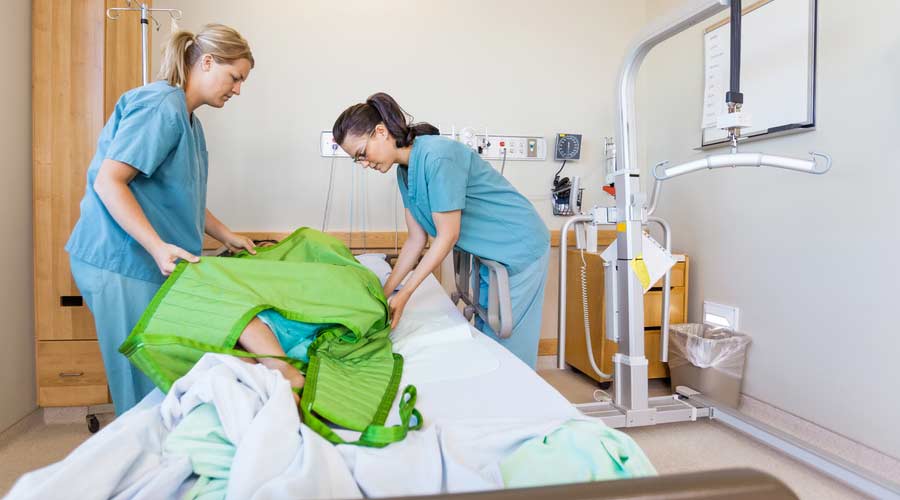Across the world, 136 million workers in the healthcare industry are entitled to a safe workplace in which protection of health and risk mitigation is a top priority. The World Health Organization (WHO) recently recognized this challenge and released its recommendations for improving occupational health and safety measures to protect healthcare workers worldwide.
The health and safety programs recommended are fundamental for well-functioning and resilient healthcare systems to ensure patient quality of care and maintain a productive workforce, according to WHO. The new guide, Caring for Those Who Care: Guide for the Development and Implementation of Occupational Health and Safety Programmes for Health Workers, provides an overview of the key elements of occupational health and safety programs, which applies to “all people engaged in work actions whose primary intent is to improve health.”
This definition allows for the development and implementation of these programs to apply to all levels of healthcare personnel, including medical and non-medical technicians, personal care workers, community healthcare workers and support workers, such as hospital administrators, district health managers, social workers, cleaners, drivers and other occupational groups in health-related activities as defined by the International Standard Classification of Occupations, ISCO-08.
Identifying occupational risks
The purpose of occupational health and safety programs is to prevent diseases and injuries arising in the work environment or during procedures while improving the quality and safety of care, safeguarding the healthcare workforce and promoting environmental health and hygiene. Of note, WHO’s guide addresses the range of occupational risks in healthcare “associated with infections, unsafe patient handling, hazardous chemicals, radiation, heat and noise, psychosocial hazards, violence and harassment, injuries, inadequate water, sanitation and hygiene.”
The guide not only emphasizes the importance of health and safety programs to protect workers from risks but also provides implementation tools, including recommended subject areas for program development, strategies for implementation, and program evaluation criteria.
The guide addresses unilateral concerns for occupational health and safety in all regions of the world, from the national level down to the facility level. It recognizes that on the national level, it is imperative to have regulations and standards for prevention and control of hazards in-place and applicable in all health facilities and personnel. Key to this success is the participation of multi-stakeholder employers’ and workers’ representatives to oversee and steer program implementation, provide monitoring and conduct evaluations.
At the facility level, the following are recommended deliverables for any successful program:
- a written facility occupational health and safety policy with detailed standard operating procedures available in all health facilities
- a regular training program and safety briefing plan for all health workers and specific target groups that is properly designed, planned and implemented
- risk assessments that are regularly carried out and documented to prevent and mitigate occupational hazards
- action plans for work improvements that are developed, implemented, monitored and evaluated in collaboration with safety and health committees and workers’ representatives
- immunization against vaccine preventable diseases that is provided at no cost to health workers, ensuring all required doses of immunizations have been received by all workers at risk, including cleaners and waste handlers
- arrangements for recording and notification of occupational accidents, occupational diseases and, as appropriate, dangerous occurrences, commuting accidents and suspected cases of occupational diseases
- adequate provisions for water and sanitation, facilities for personal hygiene, clothing, rest, dining, safe handling and management of health care waste, and safety protocols during the use of hazardous chemicals.
Checklist for facilities
For healthcare facilities preparing to develop health and safety programs, WHO provides a checklist to assist in identifying and prioritizing areas of action for mitigating risk and improving the protection of workers. The checklist is intended to be reviewed and completed by a multidisciplinary team, including administrators, safety and health officials, environmental health services, infection preventionists, human resources and representatives of workers across various disciplines of healthcare.
This inclusive approach provides a variety of perspectives and a more comprehensive basis for identifying existing health and safety measures, potential safety hazards and solutions for sustainable mitigation. Facilities can use the checklist to generate an overview of existing and potential hazards, which can then allow for actions to improve worker protections prioritized to promote workplace safety.
WHO recognizes that healthcare systems are different across the globe and has made attempts to offer generalized recommendations that can be adopted by a nation, organization or facility. The Caring for Those Who Care guide emphasizes the importance of health and safety in all sectors of the healthcare industry. It has been clearly underscored during the COVID-19 pandemic that certain sectors were not adequately prepared to address workplace hazards they did not anticipate. As emphasized in WHO’s guide, the foremost goal of a well-designed health and safety program is to plan for problems before they arise rather than relying on quick reactions when they do.
Shari L. Solomon, Esq., is president and founder of CleanHealth Environmental, LLC. CleanHealth provides infection prevention and industrial hygiene training and consulting services geared toward facility personnel and vendors responsible for infection prevention, cleaning and disinfection, and facility operations and maintenance practices. Solomon has more than 20 years of environmental consulting and federal regulatory experience. An attorney by trade, combined with her experience in the industrial hygiene field with a focus on healthcare, Solomon holds a unique expertise and understanding of liability prevention techniques, offering clients practical and valuable risk management solutions.

 Building Sustainable Healthcare for an Aging Population
Building Sustainable Healthcare for an Aging Population Froedtert ThedaCare Announces Opening of ThedaCare Medical Center-Oshkosh
Froedtert ThedaCare Announces Opening of ThedaCare Medical Center-Oshkosh Touchmark Acquires The Hacienda at Georgetown Senior Living Facility
Touchmark Acquires The Hacienda at Georgetown Senior Living Facility Contaminants Under Foot: A Closer Look at Patient Room Floors
Contaminants Under Foot: A Closer Look at Patient Room Floors Power Outages Largely Driven by Extreme Weather Events
Power Outages Largely Driven by Extreme Weather Events